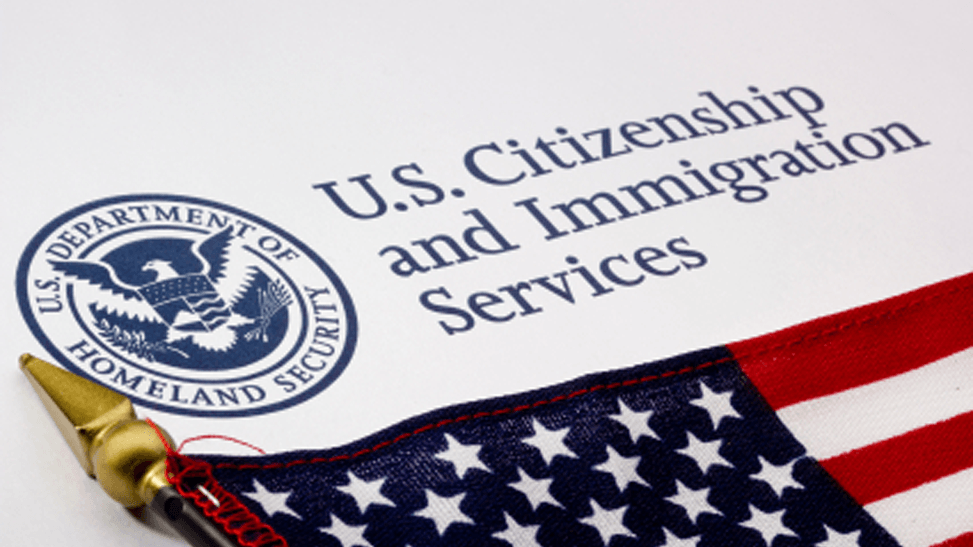Dois-je obtenir un visa d'athlète ?
Santos Lloyd Law Team • September 19, 2024
Click here to read this article in English
Un visa d'athlète (P1-A)
vous permet de venir et de rester aux États-Unis pour participer à des manifestations sportives. Dans la plupart des cas, vous n'avez pas nécessairement besoin d'un visa P1-A pour participer à des compétitions. Toutefois, si votre carrière est sérieuse et que les États-Unis jouent un rôle important dans votre sport, vous devez absolument envisager d'obtenir un visa P1-A. Les visas B1 ou B2 (visas d'affaires ou de tourisme) n'autorisent pas les séjours de plus de six mois et leur renouvellement peut s'avérer délicat, ce qui peut s'avérer plus néfaste que bénéfique pour votre carrière.
Supposons que vous quittiez votre emploi, que vous vous entraîniez dur et que vous veniez participer à un grand championnat aux États-Unis. Vous réussissez votre compétition, vous rencontrez un tas de gens sympas et vous avez la possibilité de rester dans le pays pour vous entraîner avec des athlètes et des entraîneurs de haut niveau dans un centre de haut niveau. Vous avez l'impression d'être installé aux États-Unis. Vous pouvez faire cela avec un B1/B2, mais seulement pour six mois. Vous pouvez essayer de prolonger votre séjour, ce qui est possible et faisable, mais la demande est souvent refusée et vous devrez quitter le pays ou devenir sans statut, sans grand espoir pour votre avenir aux États-Unis.
Une autre façon de procéder est de demander le statut d'étudiant (F1). Étudier, c'est toujours bien ! Cependant, la plupart des athlètes que je connais ne veulent rien savoir et préfèrent consacrer leur argent, leur temps et leur énergie à perfectionner leur art. Ils ne veulent pas payer des cours et s'engager à passer une bonne partie de leur temps dans une salle de classe en faisant semblant de s'y intéresser. De plus, votre visa sera annulé si vous n'assistez pas aux cours.
Avec un P1-A, vous n'avez pas à vous soucier des maux de tête et de l'anxiété liés aux démarches auprès de l'USCIS tous les six mois pour le renouvellement de votre B1/B2. Cela n'en vaut tout simplement pas la peine. De plus, vous n'avez pas à payer pour l'école et vous pouvez utiliser votre argent et votre temps de travail pour devenir un champion.
Comment obtenir un visa P1-A ?
Tout d'abord, il faut évidemment être un athlète, c'est-à-dire quelqu'un qui consacre la majeure partie de son temps à s'entraîner, à se préparer et à se présenter à des compétitions. Vous n'avez pas besoin d'être sponsorisé ou d'être le meilleur, mais vous devez participer activement aux compétitions et, dans l'idéal, faire partie d'un classement. Les compétitions auxquelles vous participez doivent être en rapport avec votre sport, et des athlètes de différentes nationalités doivent y prendre part.
Vous devez également faire preuve d'un certain niveau de réussite et de reconnaissance dans votre sport.
Il n'est pas nécessaire d'être champion du monde, mais vous ne pouvez pas obtenir un visa d'athlète pour votre première ou deuxième compétition. Les bons résultats et les performances passés sont importants, surtout lorsqu'ils sont associés à la reconnaissance des médias et des pairs. Ainsi, si vous apparaissez sur l'internet, dans des articles ou des magazines, cela est extrêmement utile pour votre dossier.
Maintenant que vous en savez plus, vous pouvez décider vous-même de ce qui est le mieux pour vous. Mais ne tombez jamais dans l'illégalité, d'accord ? L'oncle Sam n'aime pas ça.
Si vous avez des questions sur ce qu'un visa d'athlète signifie pour vous, prenez rendez-vous avec l'un de nos avocats expérimentés.
Nous nous réjouissons de travailler avec vous.
Ce blog n'est pas destiné à fournir des conseils juridiques et rien ici ne doit être interprété comme établissant une relation avocat-client. Veuillez prendre rendez-vous avec un avocat spécialisé en droit de l'immigration avant d'agir sur la base de toute information lue ici.

By Juliana LaMendola
•
March 20, 2025
All people living in the United States, regardless of immigration status, have certain U.S. constitutional rights. If Immigration and Customs Enforcement (ICE) officers come to your workplace, they must have either (1) a valid search warrant, or (2) consent from your employer to enter non-public areas. Non-public areas could include: staff break rooms, server rooms, mechanical rooms, HR department offices, private meeting rooms, etc. However, ICE can enter public areas of your workplace (lobby, reception area, parking lot etc.) without a warrant or consent from your employer. If you encounter ICE at your place of employment, it is important to stay calm . If an officer stops you, you may ask if you are free to leave. If they say yes, walk away calmly. If they say no, stay where you are and do not attempt to leave. You have the right to remain silent. You do not have to speak to ICE, answer any questions, or show any documents . If asked about your place of birth, how you entered the United States, or your immigration status, you may refuse to answer or remain silent. If you choose to remain silent, say it out loud: “I choose to remain silent.” If officers ask you to stand in a group based on your immigration status, you do not have to move. Be prepared to assert your rights by downloading, printing, and carrying a "red card" (available at https://www.ilrc.org/red-cards-tarjetas-rojas ) that states you do not wish to speak, answer questions, or sign documents. You are not required to show immigration documents . You may refuse to show identity documents that reveal your nationality or citizenship. However, never show false documents or provide false information. If you are detained or taken into custody, you have the right to contact a lawyer immediately . Even if you do not have a lawyer, you can tell immigration officers, “I want to speak to a lawyer.” If you have a lawyer, you have the right to speak to them and, if possible, provide proof of this relationship (such as a signed Form G-28) to an officer. If you do not have a lawyer, ask for a list of pro bono (free) or l ow bono (low-cost) lawyers. You do not have to sign anything without first speaking to a lawyer. If you choose to sign any documents, make sure you fully understand what they mean, as signing may waive your rights or lead to deportation. If you believe your rights have been violated , write down what happened. Be sure to include specific details such as names, badge numbers, and exactly what was said and done. Report the violation to a lawyer or an immigrant rights organization as soon as possible. If you or someone you know may be impacted by this executive order, staying informed and understanding your rights is crucial. At Santos Lloyd Law Firm, P.C., our trusted immigration attorneys are available to provide guidance and support during this uncertain time. Please contact us if you need assistance.

By Shirin Navabi
•
March 13, 2025
If you’ve recently received the exciting news that your O-1 visa has been approved, congratulations! The O-1 is a prestigious visa, granted only to individuals who can demonstrate extraordinary ability in their field — whether it’s O-1A: individuals with an extraordinary ability in the sciences, education, business, or athletics, or O-1B: individuals with an extraordinary ability in the arts or extraordinary achievement in the motion picture or television industry. Getting O-1 approval is no small feat, and it’s a true validation of your talent and hard work. But for many O-1 visa holders, that approval brings up the next big question — what’s the path to securing a green card? For those aiming to remain in the United States permanently, the EB-1A visa is often the natural next step. It’s also known as the green card for individuals of extraordinary ability, which makes it a close cousin to the O-1. Obtaining U.S. permanent residency through EB-1A involves two steps: 1) securing approval of the EB-1A immigration petition (Form 1-40) and 2) adjusting status to that of permanent resident or seeking consular processing. However, while these two categories share similarities, they are not identical. The EB-1A standard is significantly higher, and many O-1 holders underestimate just how much more evidence they need to present to qualify for permanent residency. The good news is, if you’re proactive and strategic about building your case, you can significantly improve your chances of success. Understanding the Difference Between O-1 and EB-1A Both the O-1 and EB-1A visas focus on individuals with extraordinary ability, but they serve different purposes. The O-1 is a temporary work visa that allows you to come to the U.S. to work on specific projects or for a particular employer. It requires a U.S. sponsor to file the petition on your behalf. The EB-1A, by contrast, is an immigrant visa — it is the first step toward obtaining permanent residency. Because the EB-1A leads to permanent residency, its eligibility standards are even higher. You must not only demonstrate extraordinary ability but also show that your recognition is sustained over time and that your work has had a lasting impact on your field. What Can You Reuse From Your O-1 Case? If you put together a strong O-1 petition, some of the evidence you submitted will still be valuable for EB-1A. This includes your awards, media coverage, expert letters, and proof of memberships in prestigious organizations. But the EB-1A demands more — you need to go beyond showing what you’ve accomplished and prove that your influence is ongoing, impactful, and recognized at a national or international level. How to Strengthen Your Case While on O-1 One of the smartest moves you can make is to use your time on the O-1 visa to actively strengthen your EB-1A profile. This means seeking out opportunities to get your work featured in top-tier media, publishing more original contributions, judging competitions, and taking leadership roles in your professional community. Every action you take to enhance your visibility and influence. Final Thoughts — The Path from O-1 to EB-1A is Achievable You may not be able to file your EB-1A today, but we can help you build your case step by step. Whether you need guidance on strengthening your profile, identifying the right evidence, or preparing a strategic filing plan, our team is here to support you. If you’re currently on an O-1 visa and you believe you may be eligible for an EB-1A visa in the future, we encourage you to contact our office. Our experienced attorneys have helped countless individuals successfully navigate this path, and we would be happy to review your case and create a personalized roadmap for your green card journey.

By Angelica Rice
•
March 6, 2025
In January 2025, the U.S. government introduced a mandate requiring all individuals without legal status in the country to register with federal authorities. This initiative aims to enhance national security and ensure compliance with existing immigration laws. If you or someone you know is affected by this change, it's essential to understand the specifics of this requirement and how to comply. Who Is Already Registered? Many individuals have already fulfilled their registration obligations through prior interactions with U.S. immigration authorities. You are considered registered if you have been issued any of the following documents: Lawful Permanent Resident Card (Green Card) Form I-94 or I-94W (Arrival/Departure Record), even if the period of admission has expired Immigrant or nonimmigrant visa issued before arrival Employment Authorization Document (EAD) Border Crossing Card Additionally, if you have applied for lawful permanent residence using forms such as I-485, I-687, I-691, I-698, or I-700, even if the applications were denied, or if you were paroled into the U.S. under INA 212(d)(5), you have met the registration requirement. Who Needs to Register Now? If you have not been registered through any of the means mentioned above, you are required to register under the new mandate. This includes: Individuals aged 14 or older who were not registered and fingerprinted when applying for a visa and have remained in the U.S. for 30 days or longer. They must apply before the expiration of those 30 days. Parents or legal guardians of children under 14 who have not been registered and have been in the U.S. for 30 days or longer. They must register their children before the 30-day period ends. Any individual who turns 14 years old in the U.S. and was previously registered. They must apply for re-registration and fingerprinting within 30 days after their 14th birthday. Notably, American Indians born in Canada who entered the U.S. under section 289 of the INA and members of the Texas Band of Kickapoo Indians who entered under the Texas Band of Kickapoo Act are exempt from this requirement. How to Register The U.S. Citizenship and Immigration Services (USCIS) is developing a new form and process for registration. Starting February 25, 2025 , individuals required to register should create a USCIS online account in preparation for the registration process. Once the process is implemented, registrations will be submitted through this online account. Important Considerations Registration Is Not an Immigration Status: Completing the registration does not grant any immigration status, employment authorization, or other rights or benefits under U.S. law. Consequences of Non-Compliance: Failure to comply with the registration requirement may result in fines, imprisonment, or both. At Santos Lloyd Law Firm, P.C., we are committed to guiding you through this process with compassion and expertise. Our trusted immigration lawyers are here to provide the information and assistance you need during this time. For personalized guidance and support, please contact Santos Lloyd Law Firm, P.C., and speak with one of our experienced immigration attorneys. We are dedicated to helping you navigate these changes and securing a hopeful future.



